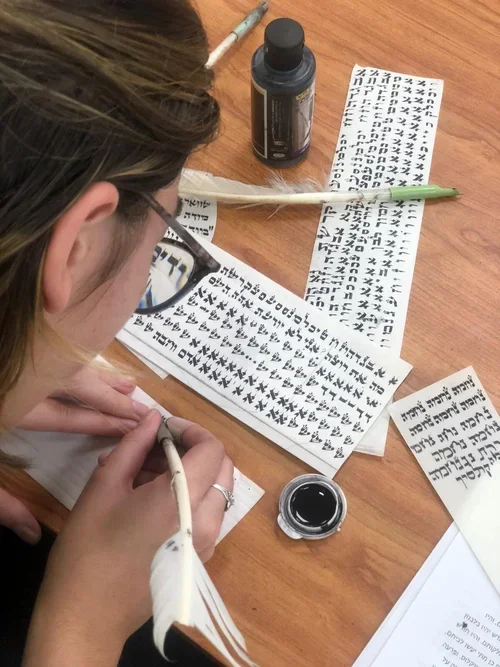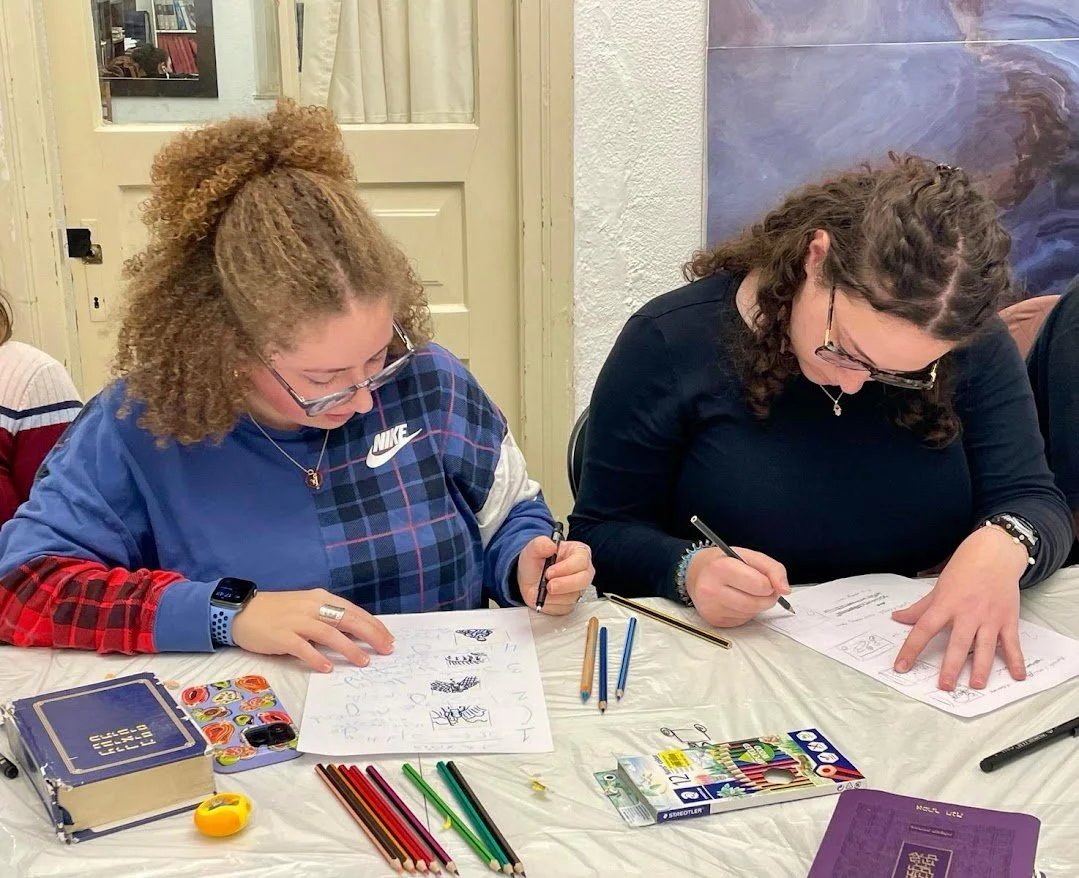At Midreshet Amudim, Torah takes many forms. It begins in the Beit Midrash but extends into every aspect of life: intellectual and spiritual, practical and ethical, creative and communal. No matter what form it takes, every dimension of life can become a dimension of Torah.
Torah at amudim is…
-
During Shabbat Ba-Teva, we bring halacha outdoors, preparing for Shabbat under the stars while putting what we’ve learned into practice. After studying the sources on techelet, we take part in producing the ancient blue dye ourselves. We celebrate the Ethiopian Sigd, dialogue with Charedim in Bnei Brak and Karaites in Be’er Sheva, and explore how Torah speaks to real people and real questions. Torah here is alive; it’s thoughtful, relevant, and in constant motion.
-
Torah here isn’t something you only receive but something you shape and ultimately own. After studying the halachot of the arba minim, each student heads to the orchard to choose her own etrog, applying knowledge, judgment, and personal insight to decide which is best. The same sense of responsibility continues throughout the year, in independent beit midrash projects, original research, creative haggadah and siddur making, and internships that reflect each student’s initiative and interests. Torah is in your hands, to study, build, and bring to life.
-
Creativity becomes another way of giving expression to Torah. In our Safrut (Scribal Arts) sessions, we study the symbolic and spiritual meaning of the Hebrew letters and then bring them to life with quill, ink, and parchment under the guidance of a master Sofer. In Biblical Portraits, we mine midrashim for their psychological and narrative depth, then translate those insights into visual midrashim of our own. In Theater and Theology, we explore how dramatic interpretation can illuminate faith, choice, and human struggle. Across all these spaces, creativity becomes a form of commentary, a way of thinking, feeling, and engaging Torah anew.
-
Torah values don’t end in the Beit Midrash; They extend into the world. Each week, students take part in internships and volunteer placements across fields such as medicine, STEM, education, archaeology, the arts, and animal care. Alongside this, we dedicate time to chesed, working with individuals who are physically or mentally challenged, volunteering in agricultural projects across Israel, packing food for families in need, and supporting victims of terror. Through these experiences, students learn that giving, too, is a form of Torah, one lived with compassion, purpose, and responsibility.
-
Torah is explored through many lenses: historical, scientific, and textual. In classes at the National Library of Israel, we examine kitvei yad (original manuscripts) and compare textual variants to see how Torah has been transmitted across generations. Our Museum Tanakh course takes us to the Bible Lands Museum, where archaeology brings the biblical world to life and deepens our reading of the text. Even complex halakhic questions, like those involving mesorah and dentition in modern kashrut controversies, remind us how Torah draws insight from every discipline. Torah here is multifaceted because truth itself has many dimensions.
-
Torah learning touches the heart as much as it challenges the mind. Classes like Cheshbon HaNefesh, Mishlei, and 50 Big Questions invite students to encounter themselves within the texts— to think, feel, and reflect on who they are and what they believe. Each discussion grows out of the students’ own voices and questions, making learning deeply authentic and alive. In workshops like Parsha Dialogues, students enter a personal conversation with the weekly Torah portion, and in our student-led panel discussions, the topics emerge entirely from the questions they ask. Torah here stirs the soul because it reaches the person within.
















